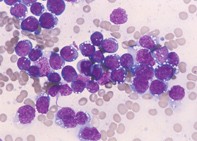Peer Reviewed
Feature Article Haematology
Clinical presentations of haematological disease
Abstract
Few clinical symptoms and signs point immediately to haematological disease and many affected patients are diagnosed by chance on routine laboratory testing. However, as definitive treatment exists for most haematological disease, it is important that the underlying pathology be identified before irreparable end organ damage occurs.
Key Points
- Apparent organ or system specific disease may be the initial presentation in patients with underlying primary haematological disease.
- A full blood count and basic biochemical analysis are cost effective investigations to diagnose or exclude a wide range of serious haematological disorders.
- A medication history is of central importance in the investigation of patients with abnormal haematology laboratory results.
- A patient’s history is the best guide to a haemostatic defect. Haemostatic screening tests in the absence of a positive clinical history have poor predictive value for diagnosing a bleeding disorder.
- Many patients with primary haematological disease are diagnosed by chance. The preoperative work up is the classic setting for this.
Purchase the PDF version of this article
Already a subscriber? Login here.

